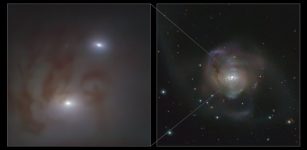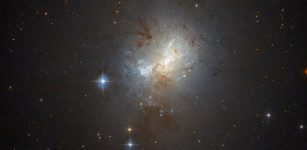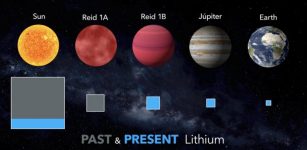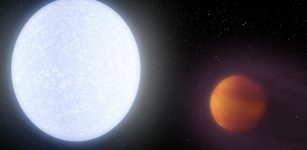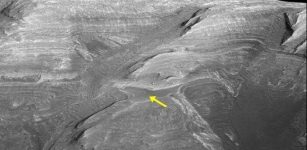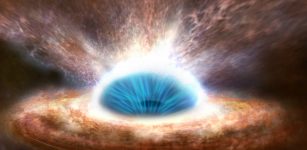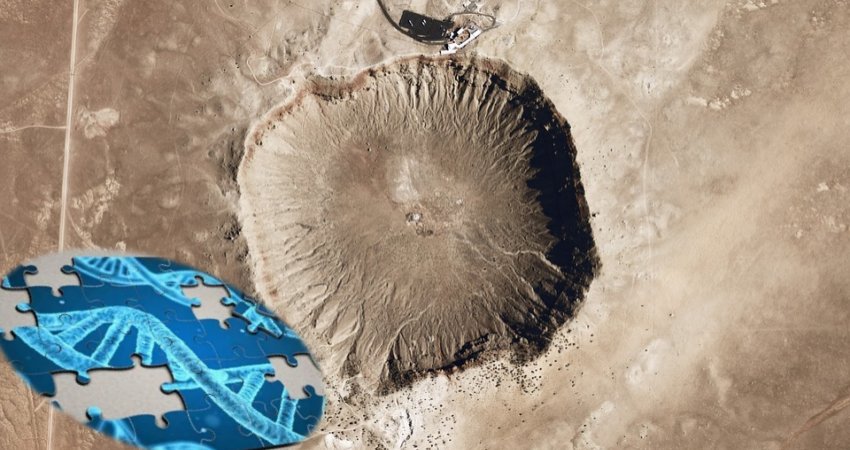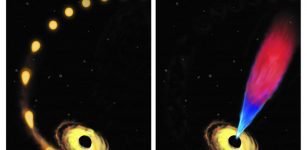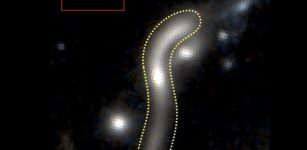Supernova In Distant Space Allows Us To Understand Origin Of The Elements In The Universe
Eddie Gonzales Jr. – MessageToEagle.com – A supernova is a stellar explosion, which occurs when the lives of some really massive stars come to an end. In this violent epilogue, the star expels the material from its outer layers by means of a shock wave, allowing us to see the various elements it was composed of.
UPV/EHU Ikerbasque Research Professor and DIPC Associate Tom Broadhurst | Photo: Ikerbasque
An international team with the participation of Tom Broadhurst, Ikerbasque Research Professor of the University of the Basque Country (UPV/EHU) and Associate of the Donostia International Physics Center (DIPC), has obtained three images, each in a different colour, of the same supernova in the distant universe, thanks to the magnifying power of a galaxy located in the foreground.
The results of the research have been published in the prestigious journal Nature.
The research team developed a model of the gravitational field of the galaxy that acted as a lens, and that way it was possible to determine that the light from these three images travelled along three different paths, differing in distance by a few days.
This accounts for the three colours obtained in the images, because a variation in the colour emitted takes place as the gas in the supernova expands and cools. The higher the temperature is, the bluer the light emitted will be, and as the temperature falls, the light emitted tends towards red. So the blue image is a photograph of the supernova a few hours after the stellar explosion, while the green and red images correspond to 2 and 8 days, respectively, after the explosion.
This information enabled the radius of the star that exploded to be determined; it was a red super-giant with a radius equal to 500 times that of the Sun, and exploded 11.5 billion years ago, long before the Earth was born, specifically at the moment when our Galaxy is thought to have formed.
The images of this supernova captured by the Hubble Space Telescope are highly magnified by the gravitational field of a nearby galaxy that acts as a lens and allows us to see much further in distance and in time than all local supernovae in nearby galaxies.
The study of the explosions of these red super-giant stars tallies with the current understanding of how the heavier atomic elements were created inside stars and during supernova explosions: elements forged inside stars are released in these supernova explosions to become the next generation of gas and material from which solar systems and life as we know it are created.
Without these explosions, the gas in today’s galaxies would only include the hydrogen and helium that formed during the Big Bang and would not support complex life that requires other heavier chemical elements.
Moreover, this supernova observed through a gravitational lens demonstrates that an event taking place in the distant Universe can be witnessed several times, so in principle we could focus our instruments in advance to get a detailed view of the eruption of a star turning into a supernova.
Written by Eddie Gonzales Jr. – MessageToEagle.com Staff



